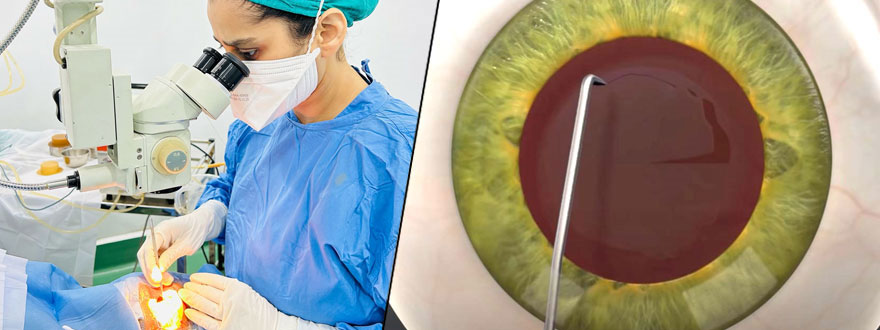Manual Cataract Surgery

Manual cataract surgery, also known as extracapsular cataract extraction (ECCE), is an older surgical technique for removing cataracts.
Our focus is on delivering safe and effective treatment to patients with cataracts using traditional surgical techniques.
Here's an overview of what this service entails:
- Patient Evaluation & Consultation: Patients with cataracts undergo a comprehensive eye examination to assess their visual acuity, evaluate the extent of cataract formation, and determine their candidacy for surgery. We discuss the surgical options available, including manual cataract surgery, and helps the patient make an informed decision based on their individual needs and preferences.
- Preoperative Assessment & Preparation: Before surgery, patients undergo preoperative testing to ensure they are in optimal health for the procedure. This may include measurements of intraocular pressure, corneal thickness, and biometry to determine the appropriate power of the intraocular lens (IOL) to be implanted. Patients receive instructions on preoperative care, including medication management and fasting guidelines.
- Customized Treatment Planning: We develop a personalized treatment plan for each patient, taking into account factors such as the severity of the cataract, ocular comorbidities, and patient preferences. This includes selecting the type of IOL (monofocal, multifocal, or toric) that best suits the patient's visual needs and lifestyle.
- Postoperative Care & Follow-up: After surgery, patients receive thorough postoperative care to promote healing and optimize visual outcomes. This includes prescribing postoperative medications (such as antibiotics and anti-inflammatory drops), monitoring for any signs of complications, and scheduling follow-up appointments to assess visual acuity and ocular health.
- Patient Education & Support: Patients are provided with detailed instructions on postoperative care, including the use of eye drops, activity restrictions, and signs of potential complications. Ongoing communication and support are offered to address any concerns or questions the patient may have throughout the recovery process.
- Continued Monitoring & Maintenance: Regular follow-up examinations are scheduled to monitor the patient's progress and ensure long-term ocular health. This includes assessing visual acuity, evaluating IOL stability, and monitoring for any signs of posterior capsule opacification or other potential complications.
By offering manual cataract surgery as a service, our aim is to improve patients' quality of life by restoring clear vision and enhancing overall ocular health. This traditional surgical approach continues to be a valuable option for patients who may not be suitable candidates for phacoemulsification or who prefer a manual technique for cataract removal.